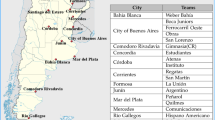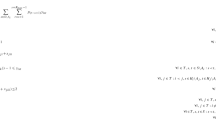Abstract
A practical problem encountered by the management of a tennis club is theorganization of a tennis tournament for the club members. The tournament participants aresplit into different series: in each series, every player plays once a week with adifferent opponent in a round robin tournament. All matches are subject to a time limitcorresponding to one hour. All the series share the same pool of courts, whose weeklyavailability is predefined. In addition, the players have their own availabilityconstraints. Given the courts and players availability, the objective is to schedule thetournament with no violation of the constraints or, more realistically, in order tomaximize the number of feasible matches. This problem can be formulated as a maximummatching problem, with the additional constraint that each player must play just once aweek. It can also be modeled as a maximum clique problem. A two‐step heuristicprocedure is proposed to solve the problem: first, the round robin tournaments ofeach series are generated, then the matches of each tournament are assignedto the available courts for every week by means of a local search procedure. The procedurehas been succesfully implemented and is currently used by the tennis club.
Similar content being viewed by others
References
D.C. Blest and D.G. Fitzgerald, Scheduling sports competitions with a given distribution of times, Discrete Applied Mathematics 22(1988/89)9-19.
F. Della Croce, Generalized Pairwise Interchanges and machine scheduling, European Journal of Operational Research 73(1995)310-319.
M.R. Garey and D.S. Johnson, Computers and Intractability: A Guide to the Theory of NP-Completeness, Freeman, San Francisco, 1979.
F. Glover, Tabu search, Part I, ORSA Journal on Computing 1(1989)190-206.
F. Glover, Tabu search, Part II, ORSA Journal on Computing 2(1990)4-32.
J. Haselgrove and J. Leech, A tournament design problem, American Mathematics Monthly 84(1977)198-201.
E. Mendelsohn and A. Rosa, One-factorizations of the complete graph — a survey, Journal of Graph Theory 9(1985)43-65.
C.H. Papadimitriou and K. Steiglitz, Combinatorial Optimization: Algorithms and Complexity, Prentice-Hall, Englewood Cliffs, 1982.
J.A.M. Schreuder, Combinatorial aspects of construction of competition of Dutch Professional Football Leagues, Discrete Applied Mathematics 35(1992)301-312.
J.A.M. Schreuder, Construction of fixture lists for Professional Football Leagues, Internal Report, Ph.D., Department of Management Science, University of Strathclyde, Glasgow, UK, 1993.
W.D. Wallis, A tournament problem, Journal of the Australian Mathematical Society (B) 24(1983)289-291.
D. de Werra, Scheduling in sports, in: Studies on Graphs and Discrete Programming, ed. P. Hansen, North-Holland, Amsterdam, 1981, pp. 381-395.
D. de Werra, L. Jacot-Descombes and P. Masson, A constrained sports scheduling problem, Discrete Applied Mathematics 26(1990)41-49.
Rights and permissions
About this article
Cite this article
Della Croce, F., Tadei, R. & Asioli, P. Scheduling a round robin tennis tournamentunder courts and players availability constraints. Annals of Operations Research 92, 349–361 (1999). https://doi.org/10.1023/A:1018999101596
Issue Date:
DOI: https://doi.org/10.1023/A:1018999101596




